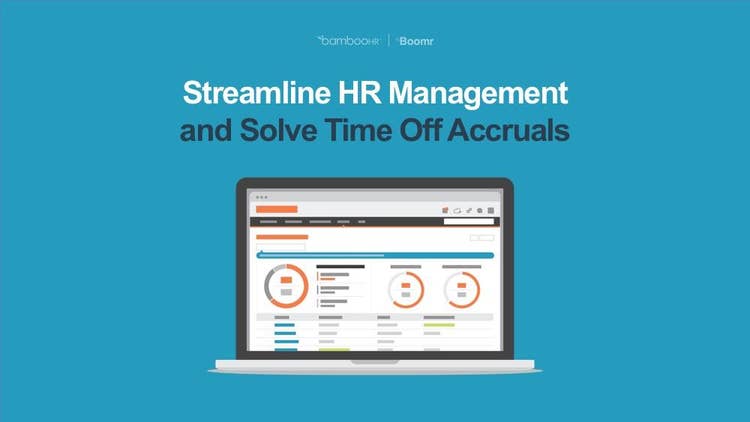What is Leave Accrual Processing?
Leave Accrual Processing Overview
Leave accrual processing is a method HR teams use to track employee leave awards and balances. The method processes your employees’ leave accruals depending on how your business defines its time-off plans. Employees generally accrue leave time based on the length of their service or the number of hours they’ve worked.
Pay Your People Confidently.
BambooHR makes running your payroll easy, quick, and stress-free.
Why Should Employers Keep Leave Accrual Up to Date?
Since employees can request time off at any moment, it’s important to stay up to date on their leave accruals. That way, when a time-off request comes in, your team can immediately determine how much leave time/hours an employee has available and whether this time can accommodate their request.
It gets time-consuming to manually keep track of every employee’s accumulated sick days, paid time off (PTO), and time-off requests. Not to mention, this leaves a lot of room for human error. Incorporating a leave accrual processing system into your human resource information system (HRIS) can help alleviate these challenges for your team.
How Does an HRIS Process Leave Accrual?
An HRIS automates the leave accrual calculation process. This saves your HR team time and provides peace of mind, ensuring your employees’ time-off calculations are accurate.
Better yet, with an HRIS, your employees can receive access to their time-off accruals. This can help minimize conflicts between HR and staff. Moreover, by understanding exactly how much leave accrual they have at any given time, your employees can be more mindful of their time-off use.
Spend Minutes Tracking Hours.
Bring BambooHR's award-winning experience to time tracking for your employees, managers, and payroll team.
What Are the Types of Leave?
There are several types of employee leave. Each can be automatically tracked in your HRIS:
- Sick leave: Sick leave allows employees to take time off for short- or long-term health needs. Employers can offer either paid or unpaid sick leave.
- Bereavement leave: Bereavement leave is the time an employee takes off due to the death of a family member or loved one. Though there are no requirements for employers to pay employees during their bereavement leave, many generally do.
- Disability leave: According to the Americans with Disabilities Act (ADA), disability leave grants employees who are limited due to a physical or mental impairment the right to a work leave of absence or to reasonable accommodation. This law applies to businesses with 15 or more workers.
- Family and Medical Leave Act (FMLA): FMLA requires businesses to give employees up to 12 weeks of unpaid leave every year due to health and family reasons. This can include the birth of a new child or the care of a family member or military service family member.
- Medical leave of absence: Employees who face medical conditions that inhibit their ability to carry out their job duties are entitled to a medical leave of absence. The FMLA outlines what qualifies for medical leave.
- Military leave from work: This grants employees who take part in active or inactive duties in the U.S. military the right to take a leave of absence. These employees are legally guaranteed the right to be reinstated in their former position when they return from duty.
- Leave of absence: A leave of absence is a period of time when employees can take time away from work without jeopardizing their job standing. It encompasses several categories of leave such as the few listed above.
- Paid time off (PTO): PTO is compensated time away from work that an employer provides to employees. This can include any type of paid leave like paid personal time off, vacation, federal holidays, and sick leave.
Is PTO the Same as Leave?
As illustrated above, PTO is a type of leave, as not all types of leave are paid. Companies that offer PTO generally lump together all paid time off requests (this can include paid vacation days, paid bereavement leave, paid sick days, etc.) in a single category for bookkeeping purposes.
Businesses that offer traditional PTO usually provide a set number of PTO days at the start of a year or allow employees to accrue PTO hours with each paycheck. Either plan necessitates a leave accrual processing method.

Managing employees, time tracking, overtime, and time-off data in disparate systems is complicated. Join us on this webinar case-study to see how Vimeo was able to leverage the BambooHR and Boomr integration to simplify their workforce management and streamline their processes.

Join BambooHR and League to explore how to go beyond wellness resolutions so your organization can reap all the benefits of a healthy workforce.